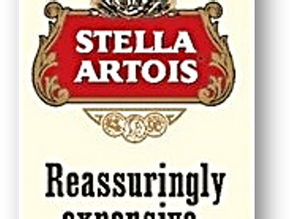The beer maker Stella Artois used its higher prices compared to other brands as a positive differentiator in their sales pitches. It was a very confident move of a company prepared to fight for their product quality rather than lower prices. It was done in a fun way too. The ads belong to my favourites.
If you hear the classic ‘it is too expensive’ objection more than once in a while, read on.
This High Growth Sales idea is aimed at sales people who want to overcome objections like ‘it is too expensive’. I will give you a script as well as a tip to avoid the objection in the first place.
Before we jump ahead of ourselves, let’s have a quick look at what is actually going on.
For an unknown reason we have managed to focus the customer’s thoughts more on cost than anything else. The demo was great and so was the need finding. We even spoke to the right person and the timing was also right.
What is even more curious is the failure of the sales process.
A sales person’s single purpose is to convince a customer seeing more value than cost and subsequently buy. After all, if a prospect sees value without that help, the sales person is not needed in the first place. A brochure or video would do.
Here is a suggested script to overcome the objection ‘it is too expensive’:
‘I appreciate you saying this. Some of my clients felt the same way after the initial meeting. When we reviewed the key benefits again, they found it good value and move forward. May I suggest we look at how our product helps your business moving forward again briefly?’
So, how can we avoid the ‘it is too expensive’ objection?
Stella Artois positioned price as a differentiator by showing how much value drinkers put on a pint.
In sales we should do the same: Find out what problem our customers want to resolve and gain their commitment in doing so. We have to make it explicit and clear enough for all parties to be able to move forward. Do that and you will have seen the last of the ‘it is too expensive’ objection. You will make more sales.
If you like to be able to pitch as well as Stella Artois but would a bit more help, feel free to get in touch.









